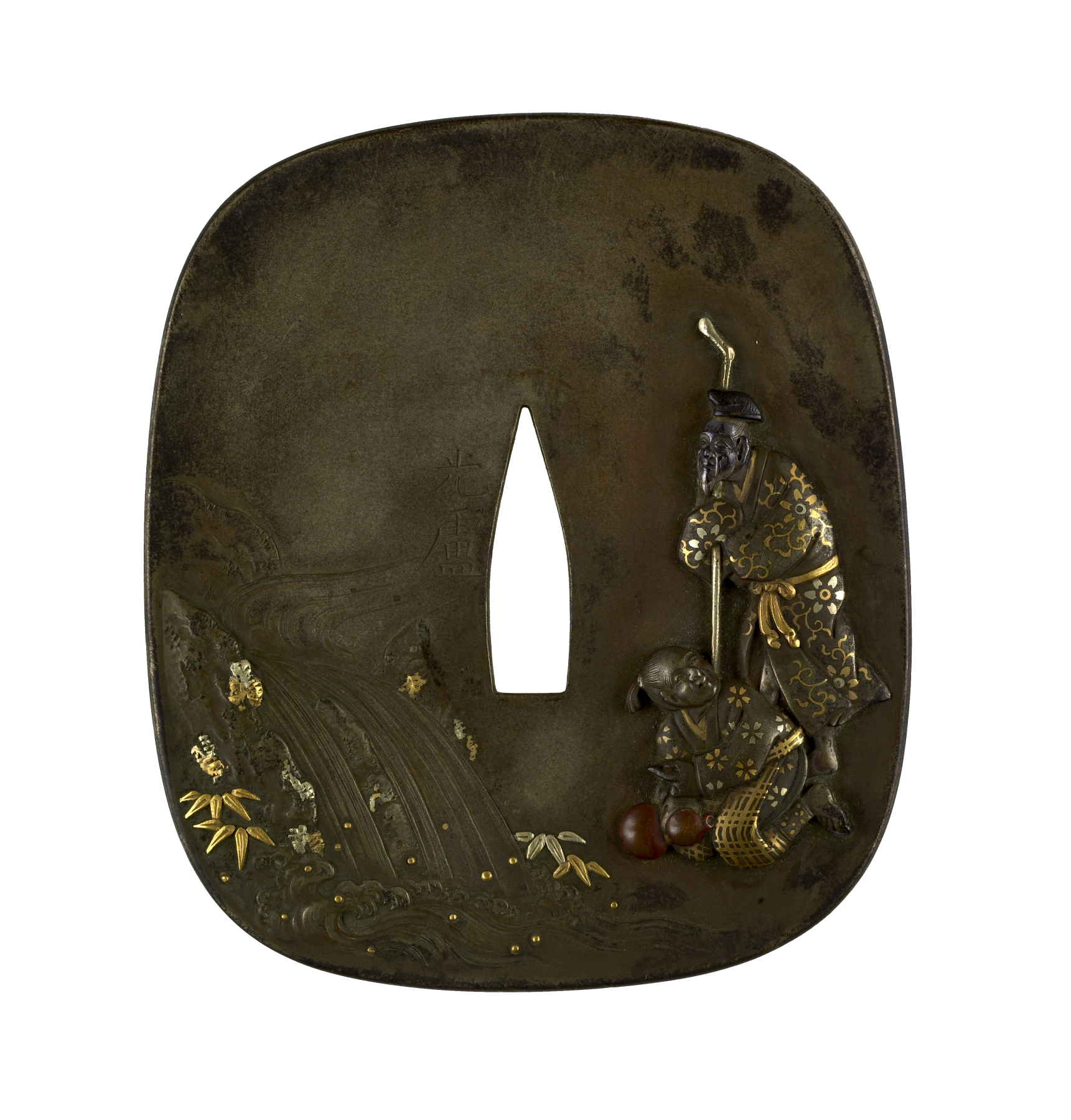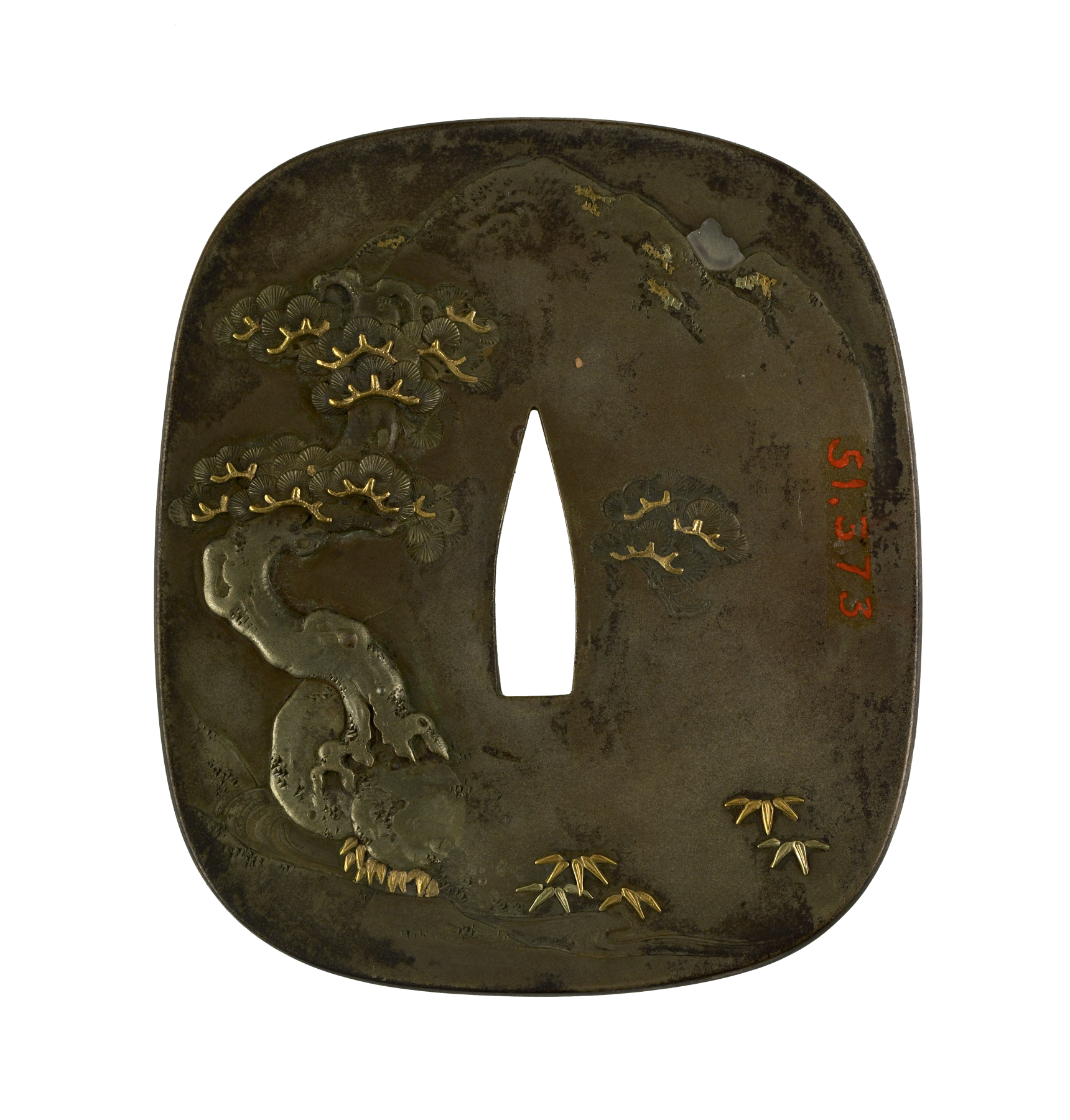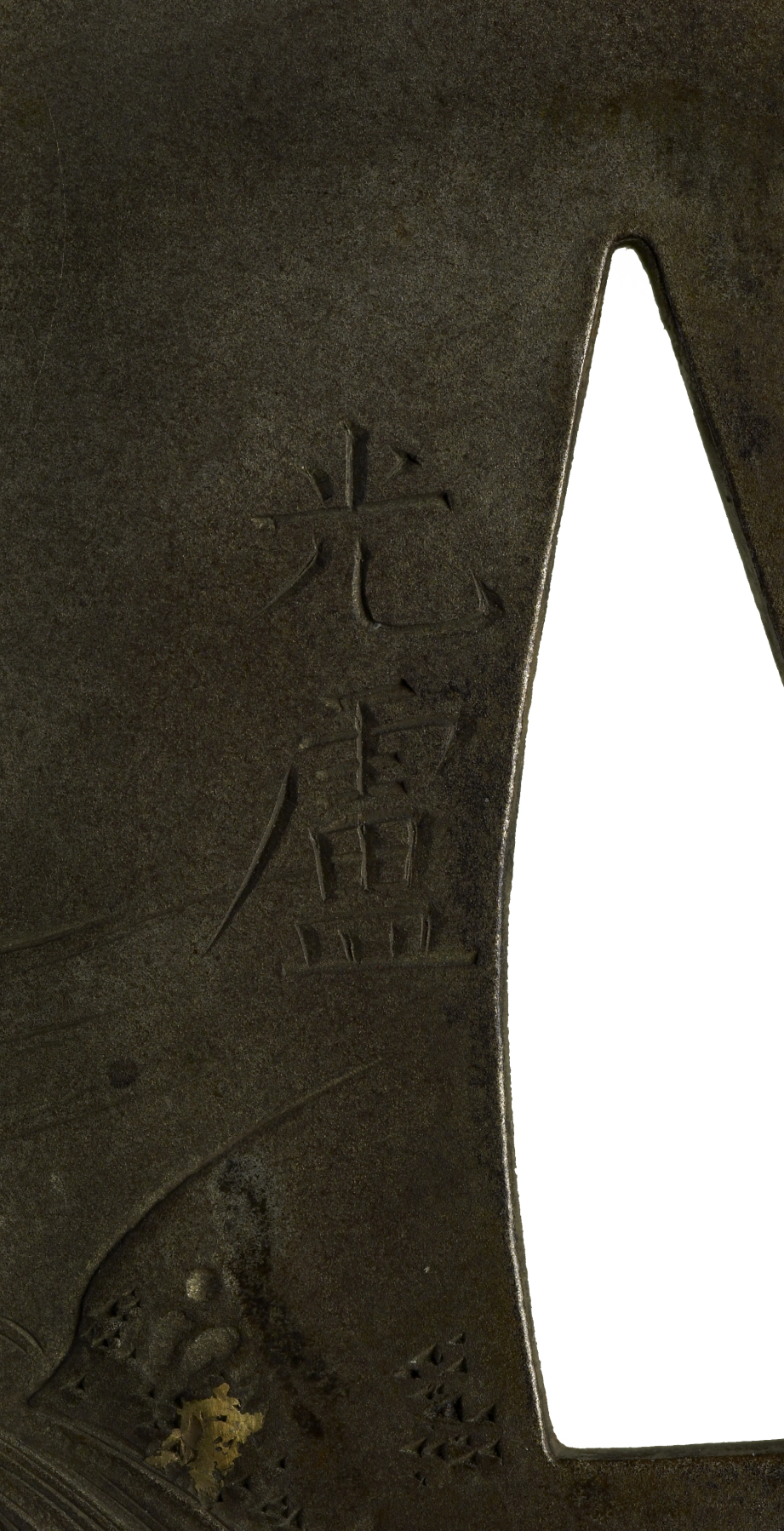Tsuba with Kôsagi, a Paragon of Filial Piety
(Japanese Military Armor)
The man kneeling at the lower right of this tsuba is Kôsagi, one of the Japanese paragons of filial piety. He worked hard every day to ensure there was enough money to buy his father some sake. When times became hard, he was unable to afford the sake despite his hard work. When he was collecting water at a stream, the gods revealed to him a waterfall which they turned into sake. Kôsagi is often depicted with a noble man, here shown standing behind him. Kôsagi holds the gourd he is about to fill with sake. The waterfall is at the lower left, with bamboo leaves on the banks. On the reverse of the tsuba is a scene of mountains and a pine tree.
Inscription
Provenance
Provenance (from the French provenir, 'to come from/forth') is the chronology of the ownership, custody, or location of a historical object. Learn more about provenance at the Walters.
Henry Walters, Baltimore [date and mode of acquisition unknown]; Walters Art Museum, 1931, by bequest.
Geographies
Japan, Tokyo (Edo) (Place of Origin)
Measurements
3 1/4 in. (8.2 cm)
Credit Line
Acquired by Henry Walters
Location in Museum
Not on view
Accession Number
In libraries, galleries, museums, and archives, an accession number is a unique identifier assigned to each object in the collection.
In libraries, galleries, museums, and archives, an accession number is a unique identifier assigned to each object in the collection.
51.373






